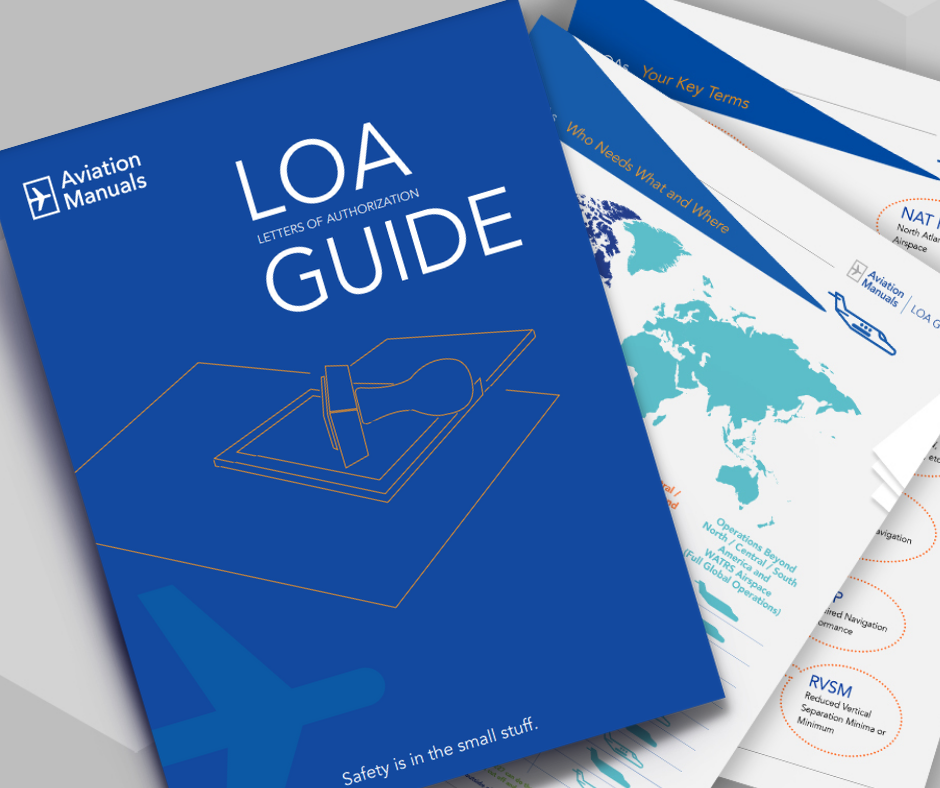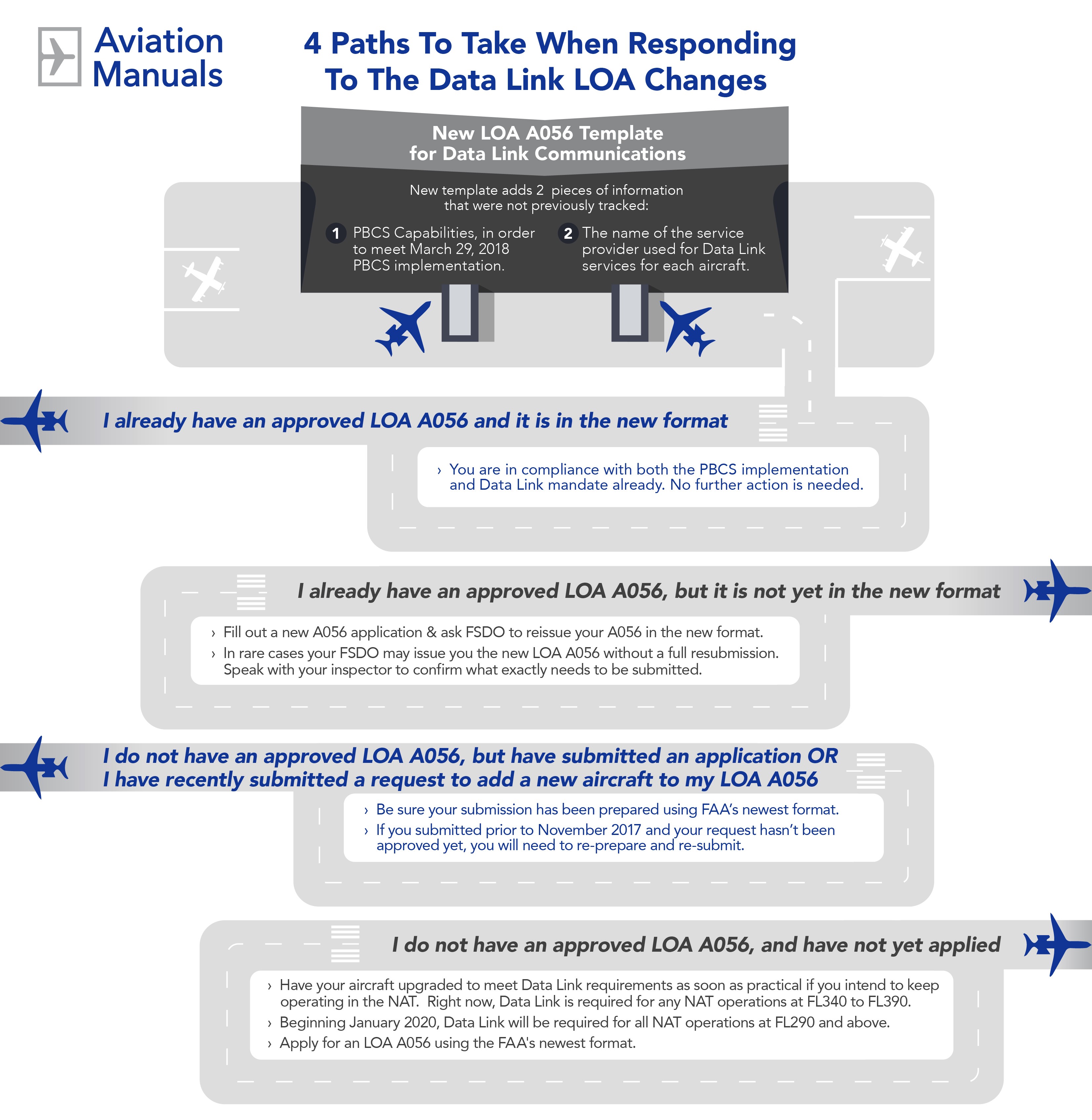The LOA development and application process may seem daunting, especially when you’re doing it alone. With our free LOA Guide (Download Here), we provide an overview of what LOAs are, when you need them, and how straightforward the application process can be.
What is an FAA Letter of Authorization (LOA)?
A Letter of Authorization (LOA) in aviation is a formal document approved by the Federal Aviation Administration (FAA) for Part 91 operators (known as Operations Specifications (OpSpecs) for Part 135) authorizing them to engage in specific flight activity. For example, when an operator wishes to use data link when flying outside of the United States, they would need to apply for a Data Link Communications LOA – otherwise known as an LOA A056. Always check which LOAs are required when planning your trip, especially when flying abroad.
Here are a few useful LOA facts:
- LOAs do not expire, unless under exceptional circumstances. You do not need to renew your LOA, unless significant operational information changes, since LOAs are tied to the aircraft and operator.
- For an LOA to be in effect, the indicated operator should have operational control of the flight.
- Once you receive your approved LOA, there’s not much else to do – no follow up is required with your Flight Standards District Office, unless you’re looking to add an authorization or revise the information on an LOA.
For an overview of all LOAs and when you need them, take a look at our LOA Guide.
Applying for an LOA
The FAA is responsible for issuing LOAs to the rightful operator, or the entity with operational control over the aircraft for a particular flight. However, the operator is not necessarily the manager or owner of the aircraft. Where multiple operators use the same aircraft, separate LOAs would be required for each operator.
When applying for an LOA, there are a few steps to take to ensure you have all the required materials:
- Make sure you have the right manual for the right LOA ready and up-to-date. Prepare the necessary operations procedures by either creating a standalone manual, or adding an appendix to an existing one.
- Gather all supporting documentation required by the FAA, such as training certificates, or company procedures, as well as a cover letter, along with potential FAA checklists, forms, or job aids.
- Once you have all documentation in place and have looked over all FAA instructions, the final step is submitting the application. Each FSDO (Flight Standards District Office) is different though, so you can expect additional instructions or feedback. Be meticulous in preparing all documentation to avoid your application being delayed or even denied. Keep in mind that we can support you throughout the entire LOA application process.
Application turnaround times vary according to which LOA you’ve applied for. Since it can take anywhere from three weeks to six months, plan your LOA application well before you plan to take to the skies.
Download your free LOA guide now to learn more about the application process, which LOAs are required when, as well as application turnaround times. Reach out to us for any questions you may have. Our LOA experts are here to help!

